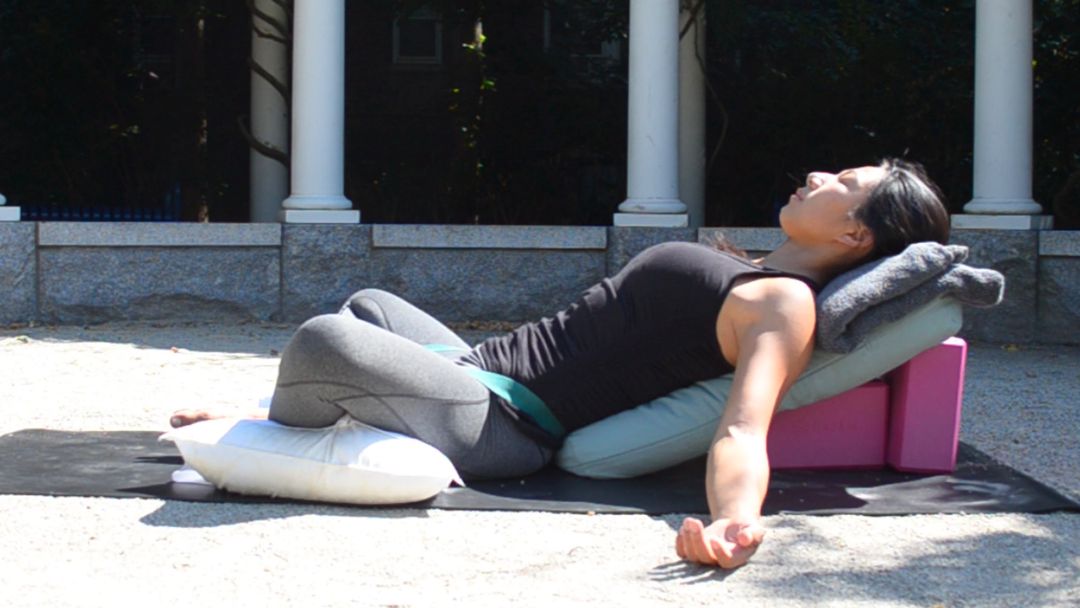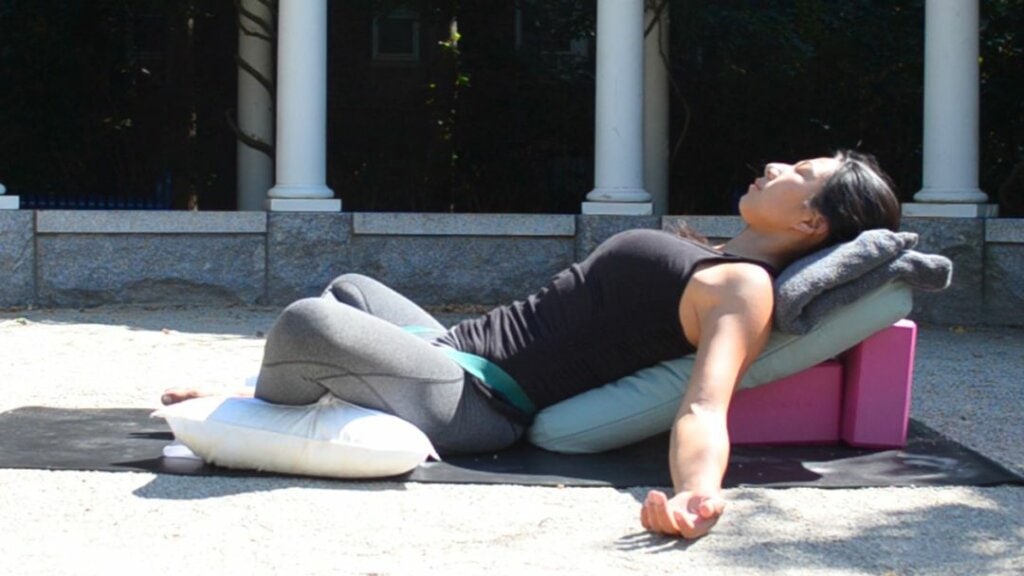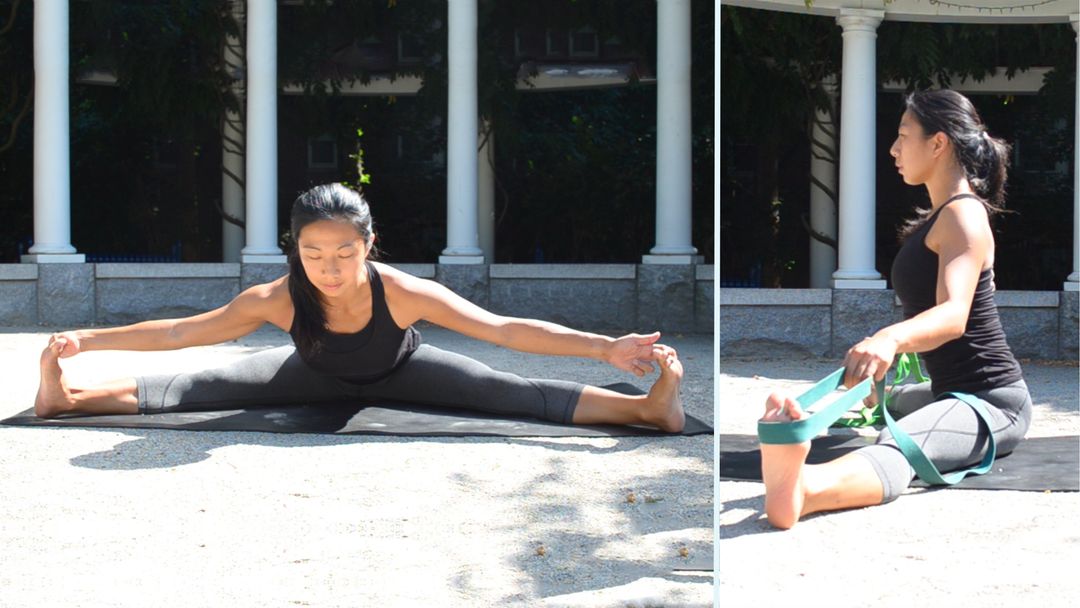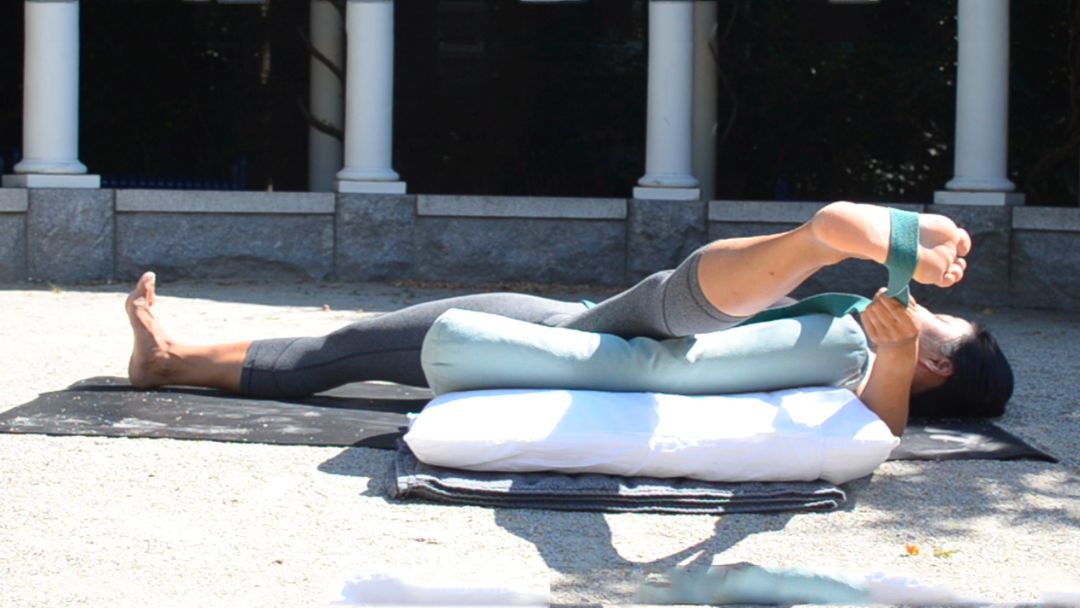The experience of pregnancy is a distinctive invitation to be acutely aware of your internal processes, both physically and mentally. Amidst the the increasingly dynamic flow of your life, there is the opportunity to be physically slower, more mindful, and trust the natural intelligence of your body.
If you have a strong and athletic personal practice, it will be especially challenging to slow down and be gentle. However, this gentler quality of practice will cultivate patience that is essential postpartum.
Paradoxically, it may also be more challenging to practice in the first trimester than in the second and third. In the first weeks after conception, the body’s hormones are in constant flux which can induce morning sickness, pain and discharge in the pelvic region, and other unpleasant and uncomfortable side effects. Therefore, it is important, especially in the first trimester and postpartum, to slow down and focus on a gentle practice.
Yoga is not a cure-all. You will be best able to listen to and respect your body. General precautions include avoid putting pressure on your abdomen and pelvis (i.e. Dandasana), compressing the internal organs and abdomen (i.e. anything Parivrtta; Marichyasana), excessive stress on the back or resting for long periods in a supine position (i.e. traditional Savasana; Urdhva Prasarita Padasana), and if you have a high risk pregnancy, always be sure to work with an experienced yoga teacher. To be safe, it is always best to consult a doctor and get approval for any physical activity.
If you are a long time practitioner or just giving yoga a try, check out these seven gentle poses selected for you to explore throughout your pregnancy to help build confidence, strength, and happiness!
Seven Gentle Poses
1. Utkata Konasana (variation) – Goddess Pose Variation
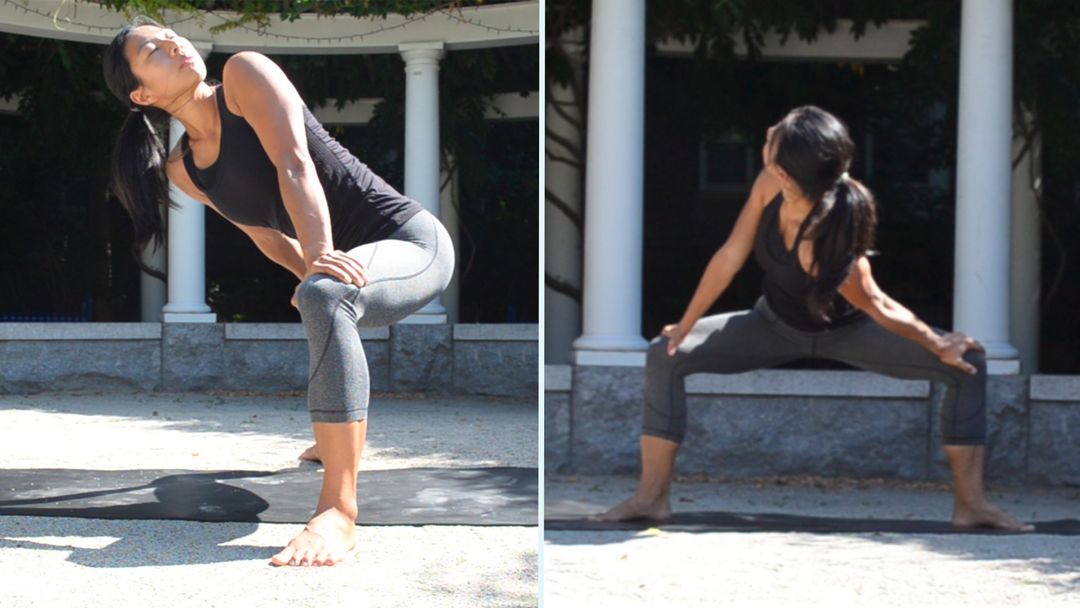
2. Virasana with Gomukhasana Arms – Hero Pose with Cow Face Arms

3. Supta Baddha Konasana – Reclining Bound Angle Pose
One of the most restorative and renewing poses for any point in life, Supta Baddha Konasana is the one to go for if you only have time for one pose a day. This pose is known to relieve pain in the abdominal organs and improve digestion which can be disturbed due to relaxin impacting the stomach. It also stretches key delivery muscles suchs as the groin, inner thighs, and pelvis as well as increases the external rotation in the hips. It is important that the lower back is completely supported by the boster and there is not a gap. If you use blocks, shape them in a T and place a bolster or pillow on top. A towel or blanket under the head lifts it up so you can explore a deeper release in the chest and shoulders. If you would like a bit of extra support, a strap around the lower back and feet can invite more sensation and release. Practice anywhere from 5-20 minutes at a time.
4. Upavistha Konasana (concave back) – Seated Wide-Angle Pose
Upavistha Konasana cultivates supplessness in the groin and inner thighs as well as strengthens the spine, lower back, pelvic muscles, This pose improves circulation and tones the kidneys. As a precaution, this pose should not be done if the fetus has descended early, the cervix has dilated, or other reasons your doctor may address. To reap the most benefit, the legs should be completely grounded on the floor, the waist long, and shoulders open for a concave back. The hands will reach towards the big toe or a strap is helpful to reach the feet. Exploring sensation in the back of the legs is key since the hamstrings can be forgotten when you stop practicing forward folds. Practice up to one minute for as long as you feel both steady (sthira) and easy (sukha) in breath and body.
5. Supta Padangusthasana 2 (variation) – Reclining Hand to Big Toe Pose 2 Variation
Sometimes practiced with the supporting leg pressed against a wall or on a block for feedback, Supta Padangusthasana 2 invites a gentle exploration of the hips. While Utkata Konasana and Upavistha Konasana requires an active opening of the hips, this variation Supta Padangusthasana 2 has support under the outer thigh of the extended leg. The support allows the body to relax which can help relieve sciatica and soothe the nerves around the hip. Only a minute or two should be practiced on each side to avoid being in a supine position for extensive periods of time. The rationale is that the growing uterus crushes the superior and inferior vena cava at the back body which carry deoxygenated blood from the body into the heart.
6. Marjaryasana and Bitilasana – Cat Pose and Cow Pose
Sharp pain in the lower belly or groin area, known as round ligament pain, is unfortunately a common and normal part of pregnancy. Marjaryasana and Bitilasana are a combination of poses to help relieve some of the pain. It is important to remember to breathe evenly throughout the movement. Inhaling to drop the belly and open the chest and exhaling to round the spine and look at the belly. The uterus will be quickly changing shape and this is a great time to explore how this movement changes in feel throughout your pregnancy. A soft and supportive blanket under the knees can help cushion extra sensitive joints. Practice 5-10 rounds at your ease, going slowly as you explore your body and breath.
7. Parsva Savasana – Side Lying Pose
As mentioned earlier, it is important to not inhibit blood flow in the back body. Since it can cause supine hypotension syndrome which lowers blood pressure and oxygen supply to your body and baby. Therefore, traditional Savasana in a supine position is not a great pose during pregnancy. To experience the same benefit without the pressure, practice a variation known as Parsva Savasana. Place a pillow between the knees and legs to keep the hips square and avoid compressing the side body. A blanket, eye mask, or towel over the eyes can help you relax more and decrease environmental stimulation. If you have more props, a pillow between the arms can help keep the shoulders square and support even breathing. Practice for 10-30 minutes with active awareness to your breath and body, it is also okay to sleep in this position.
Remember, your body is working incredibly hard to create a healthy environment for your growing baby. Yoga is a chance to add energy rather than create more demand on your body. It is an opportunity to be empowered and advocate for what feels good and what does not in your unique body. Take time to explore your beautiful body and bond with your baby.
